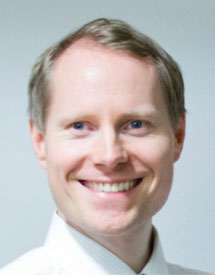Eye innovation

Group leader
The group primarily focuses on improved diagnostics and treatment of dry eye disease.
We take a special interest in biochemical analyses, proteomics and metabolomics/lipidomics, of the tear film of patients with various types of dry eye disease and healthy individuals using artificial intelligence.
The research group strongly believes in multidisciplinary collaboration across various institutions nationally and internationally in collaboration with pharmaceutical companies.
From research to inventions
We aim to narrow down our research to what we consider has the greatest potential to be translated into new methods or products.
Six patent applications from the research group have so far been submitted by the innovation company Inven2.
Awards and honors
- Rated number 12 among all scientists in Norway - in terms of publication points in 2021
- Oslo University Hospital Early Career Award for Outstanding Research 2017 – NOK 150,000
- First prize winner of the Medinnova Innovation Competition 2008, the largest innovation prize in health care in Norway - NOK 250,000
Externally funded innovation and research projects - a selection
- EU Horizon 2020: 15 PhD students for the entire consortium – innovative training network with planned rotation between universities/hospitals – consortium member
- The Norwegian Research Council:
- research funding - FRIMEDBIO - MNOK 10
- innovation funding BIOTEK 2021 - MNOK 4,6 and FORNY - Southern and Eastern Norway Regional Health Authority:
- research - several PhD/postdoctoral fellows
- various innovation funding - University of Oslo:
21 medical/dental research students with three years research programs, in addition to several PhD/postdoctoral fellows; several in collaboration with the Norwegian Dry Eye Clinic - Oslo Metropolitan university/SimulaMet: PhD students
- The Association for the Blind and Partially Sighted
- The Norwegian Society of Ophthalmology
- Pharmaceutical companies
- Private donations: allowing co-supervision of several PhD students/postdocs in dry eye disease and artificial intelligence besides the purchase of a state-of-the-art masspectrometer
International collaboration - a selection
- Professor Darlene A. Dartt, Department of Ophthalmology, Harvard Medical School, Boston, USA
- Associate Professor Dong Feng Chen, Department of Ophthalmology, Harvard Medical School, Boston, USA
- Professor Neil Lagali, Department of biochemical and clinical sciences, Linköping University, Linköping, Sweden
- Senior Scientist Jelle Vehof, Department of Epidemiology, University of Groningen, University Medical Center Groningen, Groningen, The Netherlands
- Professor Chris Hammond, Department of Twin Research & Genetic Epidemiology, King’s College London, St Thomas’ Hospital, London, United Kingdom
- Senior Lecturer Pirro Hysi, Department of Ophthalmology, King's College London, United Kingdom
- Editor-in-Chief/Professor Kai Kaarniranta, Department of ophthalmology, University of Eastern Finland, Kuopio, Finland
- Professor Miriam Kolko, Dept. of ophthalmology, University of Copenhagen, Denmark
- Professor Steffen Heegaard, Dept. of ophthalmology, University of Copenhagen, Denmark
- Professor Jakob Grauslund, Dept. of ophthalmology, University of Southern Denmark, Denmark
- Professor Katerina Jirsova, Charles University, Czech Republic
- Section chief physician Elin Bohman, St. Erik's Eye Hospital/Karolinska Institutet, Sweden
